Asparagus is far from all gardeners, believing that the plant has only decorative meaning. At the same time, asparagus contains a unique composition of the useful elements for the body and has an original taste. Also asparagus is actively used in medicinal purposes. To gather on the plot of a large harvest of asparagus, you need to know the rules not only landing of the culture and its cultivation, but also the peculiarities of care.
Asparagus in the open soil - a description of the culture and photos
- Asparagus has another name, which is familiar with experienced gardens - Asparagus. Refers to many years of vegetable crops. It has a powerful and well-developed rhizome, stems have branching.
- Each branch is covered with bunches of thin twigs of a needed form, which grow out of the sinuses of leaves with flakes and underdeveloped spikes. In the base of the leaves, dense spurrs are formed. Asparagus grows up to 2 meters, while the bush of plants can be formed.
- Flowers asparagte with small flowers. Depending on the variety of plants, they are located in the sinuses of the leaves singly or grow in the form of inflorescences similar to brushes or shields. The fruits in vegetable in appearance resemble the round berries of bright orange color with a dense shell. Inside the berry can be from one to several seeds.
- Food is used only by young sprouts that grow every new season. When the kidneys are already blown up on the new plant, such sprouts are not used in food, as they become rigid.
- Asparagus fruiting for the season is small, from 9 to 12 shoots. This is barely enough for 2 servings for the side dish. Such a low yield justifies the high cost of vegetable. Asparagus is found not only as a cultural plant, but also quite often grows in the wild. But for the cultivation of medicinal varieties asparagus requires special skills.
- For growing in the garden of any variety, asparagus will not need strong effort, since the plant is completely unpretentious in care. It may grow on the same place without a transplant for a long time. Grow asparagus is possible from seeds, seedlings or seedlings. Good coming to a new place. A frost-resistant plant that quickly grows in the open soil.
- In addition to excellent taste, Asparagus has decorative properties and is suitable for growing in the garden or flower bed. A variety of asparagus species and its beauty you can evaluate, looking at the photo below.
Species and Sorts asparagus
Asparagus as a vegetable culture is not too common among Russian gardeners. But despite this, asparagus for growing in local conditions, a sufficient amount is derived. By varieties of asparagus can be divided into the following types.
- One of the most common types of asparagus is considered green. It was grown in medicinal purposes in ancient Rome. Often, this type of asparagus is used for eating and canning.
- Not a very popular asparagus species, but rather nutritious - white. It has several names: whitewashing, etiolated or gardeners, it is also called the non-chlorophile for the lack of a green shade. Cultivated for the first time in the 19th century, Moscow is considered to be the center of the surveillance.
- The most rare and expensive asparagus species is considered purple. It is often called red. It has a slightly bitter taste and changes its color to green during thermal processing.
Today there are Kolo 300 species of asparagus, among them you can highlight the main types of plants: vegetables for eating, decorative for growing in flower beds and medicinal, which are used in traditional medicine. In addition, all asparagus varieties are divided into ripening time of new shoots. Here are some varieties of culture that are adapted for landing for local conditions in the open ground.
- Early yellow. It is considered one of the most crops of asparagus, whose shoots ripen early. The plant is rather resistant to disease and less exposed to pests. The variety belongs to the domestic selection, has shoots with a delicate pulp with a dense head and a yellow tint.
- Heinlim.This type of asparagus belongs to foreign selection with a high yield of new cuttings for one season. Sprouts are distinguished by high quality and wounded ripening. From one square meter per season, you can collect up to 3.5 kg. Escapes. Sprouts have a green tint outside, inside have a white-yellow flesh. The weight of one cutlery reaches 120 g., Up to 25 cm. And a thickness of 1 to 2.5 cm.
- Mary Washington.The variety is medieval, was derived by American breeders. The variety is well adapted to grow in our area. Soothes have a dense base with a thick stem and a large top. The shade can be from red to saturated purple. When exposed to light, the head acquires green.
- Yellow. The variety refers to medium-grained vegetables, was first led abroad, but subsequently complemented by Russian breeders. Soothes have a gentle white shade pulp with yellow notes. The cuttings themselves are light pink, which when light become green with a purple tint. The weight of each escape can reach 50 g. And height from 12 to 20 cm.
- Tsarist. The mid-freed variety, which is most often used by gardeners, as it has frost-resistant qualities, it is well tolerate drought and is practically not amazed by pests and diseases. The shoots of gentle green, inside the flesh white, on the shape of a cutlery look like a needle. For the season you can collect from 2 to 5 kg. Asparagus from one bush.
- Glory Braunschweig. One of the late varieties of asparagus, which is characterized by a high yield in one season. Soothes have a juicy white flesh, suitable only for canning.
Methods for growing asparagus seed
Since the root system in asparagus is developed and volumetric, then culture should only be grown in the open soil. When planting a plant, seeds seeds are formed for a long time, so it is necessary to sow asparagus in advance. After strengthening the sprouts, they are transplanted into the pots, then harde the seedlings in the greenhouses and only then the plant disembarks for a permanent place.
Sowing asparagus seeds in boxes
- Experienced gardeners are beginning to prepare asparagus seeds in mid-March to have time to plant seedlings in the season. Purchase seeds should only have proven sellers to eliminate the damage of the material.
- First, overborn the seeds, soak them in a heatman's solution for 2 hours, then fill with warm water. The processing of potassium permanganate seed will make it possible to displacing the material from the spore of the fungus and other bacteria. This action will strengthen the sowing qualities of seeds. Leave the planting material in the water for 3 days, while changing the liquid a couple of times a day. Also, some gardeners use growth amplifiers, which are added to the water to soak seeds.
- After 2 days, gently lay out the swollen seeds on wet sawdusts for germination. Instead, you can use paper or material that you also need to pre-moisten. It is categorically not recommended to use gauze seed for germination. Young sprouts are confused among the threads, and you will be uncomfortable to get them for landing in the box.
- While the seeds are tagged, prepare the container for planting the material. Most often drawers with shallow bottom. For germination, it is necessary to prepare an soil mixture consisting of one piece of soil from the garden, humid and peat. Add to the mixture 2 of the river sand and mix well.
- Soil put in the box so that it remains a couple of centimeters of free space for the appearance of sprouts. The soil do not be very trambed, let the air freely circulate in it. When the sprouts reach 3 mm, go to the disembarkation. It should take place with such a calculation so that seedlings began to strengthen in mid-April.
- Choose the most stronger shoots, gently shift them into the box. Place the sprouts at a distance of 6-7 cm. From each other, and a depth of 2 mm. From above, close to the ground and set the box to a well-lit place.
- To obtain a good seedlings in the room where the box with sprouts is located, about 25 degrees of heat should be supported. The soil must be moderately moistened daily.
- If you comply with the specified conditions, then after 10-14 days you will see the first rapid sprouts. At this stage, the shoots are sprinkled with a thin layer of peat and mineral fertilizers are made, but with the lowest concentration.
Picking and growing asparagus in pots
- After the seedlings reached 15 cm. (Usually it is 1-1.5 months) go to the diving from the total box in the pot. The planting mixture for pots is the same that you used in the box. Prepare a soil for asparagus, a spatula of the escape, make a depression in the soil in a pot. Ends of the roots of each sprout should be slightly cut, then transplanted into the pot and sprinkle the earth.
- Watering spend daily, but at the same time avoid soil harnesses. If required, then spend the weeds from weeds. After a couple of hours after irrigation, carefully burst the soil around the escape to enter the root system.
- The first subcorter after diving asparagus passes only a few days later. After making fertilizers, leave the seedlings in a warm and bright room or a greenhouse for a week. After this time, start the hardening procedures.
- To do this, take the seedlings or open the greenhouse first 1 hour per day, then gradually increase the seedlings of the seedlings outdoors until 24 hours. When the sprouts are fully fixed and can be in the air day, they can be planted into open ground.
How to grow asparagus in the events
- Some gardeners prefer to grow asparagus seedlings immediately in the events, avoiding planting in drawers and further dive. In this case, the seeding time is shifted to May of the month, as the Earth must be fine.
- The soil in the ramp must be fertile and loose. Earth before landing should be switched and add to each square meter to 6 kg of humus or compost. Nitrogen fertilizers, superphosphate and potassium sulfate in the dosage of 1 tsp. or according to the instructions for the drug at the rate of 1 kV. m. Soil.
- To ensure better seed growth, it is necessary to conduct their preliminary training. To do this, divert 1 tbsp. l. The drug "Agrikola vet" in 500 ml. Water, wet the fabric bag and put the seeds into it. Leave the boarding material to swell 3 days at the same time the bag must be wet all the time.
- Then the swollen seeds spread to the strips of wet fabric, carefully roll it into a roll and put in a warm place for a couple of weeks to germinate seeds. Every day moisturize the fabric to avoid drying the planting material. The perfect temperature for growing 25 degrees of heat.
- When the sprouts are achieved 3-4 mm. Go to the disembarkation in the ramp. In the prepared ground, make a shallow groove at a distance of 30-50 cm. From each other and paint the cooked solution of growth stimulator, for example, "Energy". One ampoule tools should be breeding in 5 liters. Warm water. Gently put the sprouted seeds to a depth of 3 cm. Popping from above with a small amount of soil. The distance between each sprout should not exceed 10 cm.
- After disembarking, spend the mulching of the soil. To do this, use a reworked manure that must be put on top of the soil with a layer of 1 cm. So that young sprouts do not froze, and the same to warm the soil, use the agriculture. It is tensioned on arcs that are installed over the seating page.
- When the height of seedlings reaches 20 cm. It is necessary to conduct its hardening. First, open a rampate page for several minutes a day, then gradually increase the time to several hours. In warm nights, it is recommended to leave the hotbed open.
- Safety sparkles care is quite simple. This is the conduct of frequent loosening of soil and moderate watering, as well as regular weeding from weeds. The first feeding is held 2 weeks after the first searches of asparagus. At this stage, a solution of potassium humate is made at the rate of every 10 liters. Waters should breed 2 tbsp. l. drug. The second feeder is held after another 14 days, but this time comprehensive fertilizers are used.
- In the autumn period, asparagus sprouts are trimmed under the root, the thick layer of peat and asparagus is laid on top of the plant. Then late in the spring, plants are found in open ground. Instead of peat, you can use foliage or overwhelmed manure.
Landing seedlings Asparagus in open ground
In most cases, gardeners prefer to plant asparagus seedlings from pots or seedlings. But there is also a method of disembarking seeds directly to the seaside ridges. In this case, the plant long grows up to rooting and strengthening sprouts passes one or two seasons. To improve growth and further collect asparagus, it is important to adhere to certain rules and the order of planting culture in open ground.
Choosing a place to disembark asparagus in open ground
- Posada Asparagus seeds in the late spring or the first half of June, depending on weather conditions. Because of this feature, landing sprouts are only strengthened by winter, and their full-fledged growth begins for the next season.
- The perfect place to grow asparagus is considered a sunny section. Well will fit the place near the fence or wall. The plant does not like excessive soil moisturizing, so you choose the place for landing asparagus away from groundwater.
- As a selection of places for growing asparagus should be taken very carefully, since the plant can be in one place without transplanting up to 25 years.
Sport preparation for asparagus
- The soil for planting asparagus should be nutritious and necessarily loose. Suitted soil. If you have loam in your site, then for the cultivation of asparagus it is necessary to make a sufficient amount of river sand. This is necessary to ensure normal air circulation for the root plant of the plant.
- Soil should be prepared in advance. To do this, clean the soil from the weeds in the fall, unpacked it to a depth of 40-50 cm. And make fertilizers. For autumn feeding, use for each square meter of 17 kg. Composite, potassium sulfate in the amount of 40 g. and superphosphate. Last tool Use according to the instructions on the package. If the soil is excessively sour, then lime or chalk should be made. On each square meter to mix the agent in the amount of 200 g.
- Soil is left alone on the wintering. Further processing of soil is carried out after the snow. The plant for the plant is haroring and the next party fertilizer is harvested. So you need to use wood ash for each square meter (about 60 g) and an ammonium salter in the amount of 20 g. Then the soil loose and move to planting a sprouted seed material.
How to plant asparagus in open ground
There are two options for planting vegetable on a permanent place of growth - this is a spring and autumn landing. Each gardener chooses for itself the most suitable way, which determines the timing of ripening of vegetable.
Spring landing asparagus
- Vegetable landing on an open section in the spring is held for the second year after planting seeds. Seed out from pots or after winter in the ramp. For landing asparagus, the ridges are 100 cm wide. With a single-row landing and 170 cm. With a double-round. The length of the landing space can be any and depends on the presence of seedlings.
- Soil is prepared in advance in the autumn period. After the spring feeding, the soil is drunk again. Replanatory seedlings of vegetable is necessary until the moment of dissolving the first kidneys. This period falls on early spring. In the center of the ridge, 1 or 2 furrows are digging. They must be deep enough (in width of 30 cm. And a depth of 40 cm.).
- A compost is added to the bottom of each furrow, which should have a layer at least 25 cm. From above, a hill is hidden. Seedlings are neatly pushed by a fork or a special spatula. Each sprout must be examined. Seedlings with fibrous rhizomes are not suitable for cultivation.
- Have the rest of the instances, cut the rhizomes, gently cut the tips and immerse in the ground. There is no clear size of the depth of landing. It depends on the location of the kidneys in the seedlings. So they must be immersed in the soil at a depth of 20 cm. The distance between the plants should be 40 cm.
- When all the sprouts are planted soil, it is necessary to pour them with warm water. The first irrigation is carried out with a glacule with small sieve, so as not to wash the seedlings. For the subsequent irrigation, you can use the hose. After each irrigation after a couple of hours, carry out soil looser.
- The fallout of asparagus by seeds is carried out in the spring, so that the seedlings can grow to the onset of cold. For the winter, new sprouts are necessarily insulated. The preparation of the soil and the seed planting scheme is the same with planting sprouted seeds into the ramp.
Autumn landing asparagus in open place
- This vegetable can also be planted in the autumn period. The exhaust technology coincides with the spring way. The difference is as follows: the seedlings are not immersed on a certain depth, and they cheer in soil. Thus, the sprouts should be inside the Holloch. Additionally, the grooves are mulched peat or humus. The seedling planning scheme is the same.
- If strong frosts are expected, then the mulch should be laid any insulation. In the spring after the heating of the soil, it is removed, the soil is neatly frozen and water water in a warm state.
Reproduction of asparagus in the garden plot
If there is a fairly tedious seeding seed out of seeds, then use the spokescape of the sparge to the open soil. With such methods, the rooting of the plant is faster, as a result of which you can earlier harvest.
Root method planting asparagus in open ground
- One of the most simple ways of planting vegetable in open ground is reproduction using roots. This species implies the autumn fit for wintering. Asparagus transplantation area must be prepared in spring. First, pick up all weeds, reharden the soil with the simultaneous removal of roots from past plants.
- In the ground, make a compost. For each square meter, use 10 kg. funds. This feeding will be enough. In the fall, the following fertilizers should additionally add according to the instructions on the package: Magnesulfate and potassium phosphate. Independent dosages, like the choice of fertilizers, will lead to the fact that the roots of the plant can burn and die.
- The soil is frozen again, a small hole is made, the prepared roots of asparagus are laid out onto the bottom. Carefully straighten them over the surface and sprinkle soil. Be sure to pour. For autumn landing on top, make a hill from the soil, then cover. This method will save roots from possible freezers.
Kustar method of landing asparagus in open ground
- It is possible to grow in the open soil as an asphalt with a handicraft method. For this type of propagation of asparagus, it is necessary to choose a landing material in advance. Well-fastened branches with a strong root system are suitable. Rhizomes should be divided, but in such a way that it remains on each part.
- Soil for transplant is prepared as well as when planting seedlings. Every 50 cm. Make a 15 cm deep holes. At the same time, the well itself should be located 5 cm. Below the total surface of the soil for proper irrigation. Form the edges of the wells.
- So that the branches of the vegetable grow smoothly, the pegs are rushing next to them, they are tied to them as it is growth. To protect asparagus from winds, you can install a plastic bottle with a cut bottom.
- With the spring planting asparagus, we provide young plants timely watering. For autumn transplants of vegetable, make a mound above it, inspire the soil and cover the agricultural. In the spring, carefully fascinate and braid the soil for air intake to roots, bring mineral fertilizers and paint.
How to grow asparag
In addition to the right cultivation of seedlings from seeds and compliance with the landings of asparagus, it is necessary to take into account the peculiarities of the care of vegetable. In the complex all these events will allow you to collect the maximum harvest and keep the plant for the next season.
Watering asparagus
- Asparagus irrigation should be carried out regularly, but in small quantities. Immediately after disembarking, the plant needs frequent watering, after a few months the irrigation frequency must be reduced and completely stopped a month before the occurrence of cold weather.
- Make sure that the soil around the plant was wet all the time, but do not allow its excessive moisture. Excessive moisture will contribute to the formation of rotting on the stems and may appear fungus.
- In dry days, water asparagus as often as possible, otherwise new sprouts will acquire a bitter taste and become fibrous.
Making fertilizers for asparagus
- The yield of culture directly depends on the supply of plants. The feeding begins with the preparation of the soil for landing seed and seedlings, which is divided into spring and autumn. The number of fertilizers and the scheme of their introduction is described above.
- The second fertilization fertilizer is held after 2 months. At this time, a korlard is used, one part of which is diluted with five parts of warm water. Irrigation is carried out roasting.
- The third feeder is brought after harvest. It is necessary to ensure the growth of existing stems. By the fall, they will make a mass and hurry enough nutrient elements in the roots. Use for each square meter in equal proportions of 30 g. Urea, potash salt and superphosphate.
- The latter fertilizer is carried out in front of the cold, approximately at the end of October. It is necessary to suspend the growth of stalks, and to prepare the plant to wintering. To do this, they use compost and ammonium sulfate for 20 g. Per square meter of soil. Then asparagus is hidden from above peat.
Other aspiring care
- In addition to watering and making feeding, attention should be paid to the soil looser. This procedure makes the soil more loose and allows air to penetrate the roots. Free circulation of air not only saturates the roots with oxygen, but also prevents the formation of rot and fungus.
- Swimming is carried out after each watering and at heavy rains. If this is not done, the crust will be formed around the plant on the soil. It prevents air penetration to the root system. It also contributes to the accumulation of moisture.
- Swimming should be carried out not only around the sprouts, but also in a bent. This procedure is carried out carefully, so as not to damage the surface roots of the plant. Also do not deepen a tool more than 8 cm during soil looser.
- Weaning plants during the growth of asparagus cause harm and do not allow vegetable to fully develop. Therefore, it is important to recall the ridges from weeds in a timely manner. Try to extract weeds along with the root and not allow them to bloom to avoid the spread of seeds around asparagus.
- After the third spring near the main stem, asparagus should be made a mound up to 30 cm high. Soil Use from rifle. The lumps are broken, and the surface of the embankment is sealing a shovel. It will give the opportunity to grow white asparagus, for the green vegetable there is no such procedure.
- To improve the wintering asparagus, the gardeners resort to the mulching of the soil around the plant, avoiding the rod. For this, the peat is used, which is stacked with a layer at least 10 cm. The spring mulch is fried together with the soil and is used as the first feeding.
- Asparagus trimming is in early spring when the kidneys have not yet managed to develop. After wintering removed damaged from cold shoots to the root level. It is also important to trim the affected branches in a timely manner so that the disease does not move to other bushes of the plant.
- Healthy branches leave, they will remove the roots from freezing during wintering. Dried shoots are cut in autumn. Seedlings in the first 2 years after disembarking needed an additional shelter by foliage or agrovolok, if there is no snow cover.
What pests and diseases come in asparagus
Although Asparagus is rarely affected by pests and is quite resistant to the manifestation of diseases, there are still cases of problems with the growth and development of the plant. Some of them arise due to improper asparagus care. It is important to take measures to eliminate the causes of the disease so that it does not spread further.
Asparagus diseases
- More often than other diseases asparagus affects rust. It manifests itself in several stages and belongs to fungal disease. As a result, not only sprouts are affected, but also stems of culture. Such copies are poorly developing in growth, do not form new yield sprouts. Foliage and branches are yellowing much earlier than ripening the root system. This prevents the formation of the kidneys, of which the shoots are growing for eating. The cause of such a disease is close soil waters and soil harness.
- Too high soil moisture can also cause the appearance of root rot, the name "Fusariosis" is also called. The root system dies before the ripening of sprouts and can damage other plants in the garden.
Pests asparagus
- Asparagus in the garden is least affected by pests, but there are 2 types of insects that can cause significant damage not only by crop, but also stems of healthy plants.
- Together with the fruits of asparagus in our latitudes was brought from Western countries as a sparhead leaf. It has a dark blue color with a bright red outline along the wing line. Food with young tops, flowers and fruits of plants. Major manifests itself in the middle of summer.
- A sprinkling fly eats only the fruits of the vegetable, striking mainly pulp. As a result, the sprouts are twisted, are indefinitely developing and in the end disappear. The insect has a brown Taurus color with yellow legs and mustache.
Sparzy processing
- To prevent the manifestation of diseases on asparagus, it is necessary to conduct a number of preventive measures. The first processing of drugs passes in early spring before the start of the renal dissipation. The second processing should be done after harvesting and ripening berries with seeds closer to autumn. Gurilds often spray plants with burgue liquid or use other fungicides.
- Processing of the plant from damage to pests is reduced to spraying by carbofos. This drug is low toxic, almost no smell. But one processing is not enough. You must often inspect and remove places with eggs, as well as cut off damaged branches and burn them.
Benefit and harm asparagus
Asparagus grown in open ground is not only a delicacious vegetable, but also contains a large amount of vitamins. This vegetable is the source of such elements as: Rutin, A, E, K and C. It also contains a large amount of folic acid, iron and sodium, manganese and magnesium, food fiber and other trace elements for the body.
Useful qualities of asparagus
- This vegetable refers to low-calorie vegetables that are well suited for unloading days and inclusion of asparagus in the diet menu. Nutrients of the plant contribute to the strengthening of the skeleton, the formation of connective tissue, participate in the blood-forming procedure of the body, normalize the work of the heart, contribute to the improvement of the liver condition and maintain the work of the kidneys. Asparagus is indispensable in the diet of pregnant women, as it contains a large amount of folic acid.
- Asparagus diet is recommended for people who suffered a heart attack. The composition of the vegetable contains asparagin. This substance strengthens the vessels with the heart muscle, expands the vessels and helps to reduce the pressure. In a vegetable there is a substance like Kumarin. It is responsible for purification of blood, prevents the formation of blood clots in vessels and stimulates the work of the heart.
- Asparagus as well as can be attributed to the tonic effect on the body, which stabilizes the work of the entire urinary system. The plant contributes to the processes that exempt the body from the accumulation of toxins with slags.
- This vegetable is often used for cosmetics. From asparagus squeeze juice, which effectively cleanses and softens the skin, nourishes it with useful elements. Many hostesses use asparagus in the fight against the corn and the removal of warts.
Contraindications for Asparagus
- Along with the healing qualities of asparagus, you should not forget about contraindications to its use and use, although these are contradictory about the dangers of culture. So there are assertions that the organism from the long-term use of vegetable can accumulate oxidic acid. As a result, a urolithiasis may form if a person has a predisposition to such a disease.
- But on the other hand, some specialists note the diuretic effect of the use of vegetable, which prevents the appearance of urolithiasis. For people with exacerbation of the diseases of the stomach and intestines, the presence of saponin in Asparagus contributes to the irritation of the gastrointestinal mucosa.
- Doctors do not recommend drinking asparagus with such diseases as: rheumatoid arthritis, prostatitis, cystitis. It is worth abandoning asparagus during individual intolerance to the vegetable.
Now you know all the subtleties of growing on the open sector of asparagus. To collect a big harvest of vegetable from your garden, choose asparagus grade correctly, consider the features of disembarking and leaving the plant.


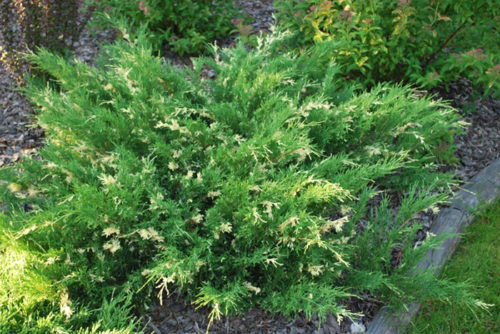
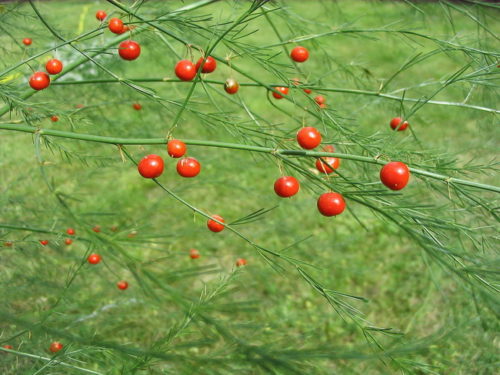
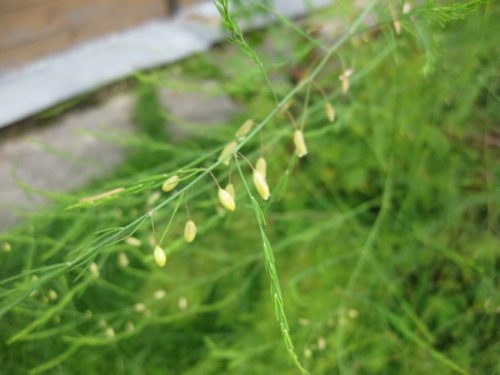
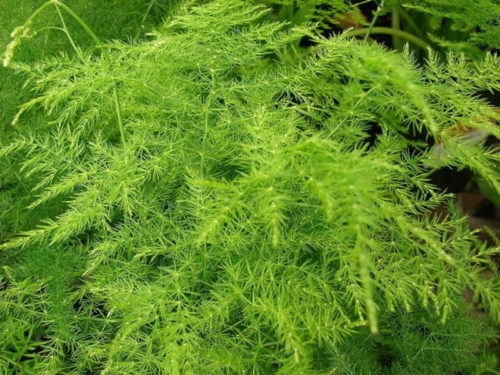



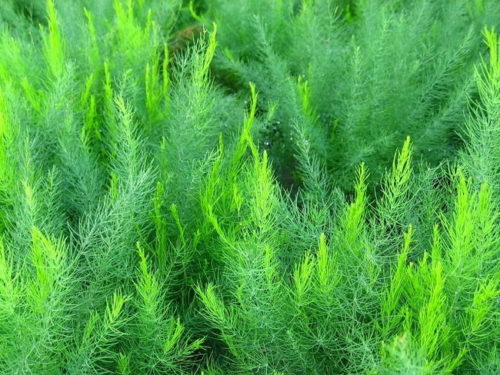
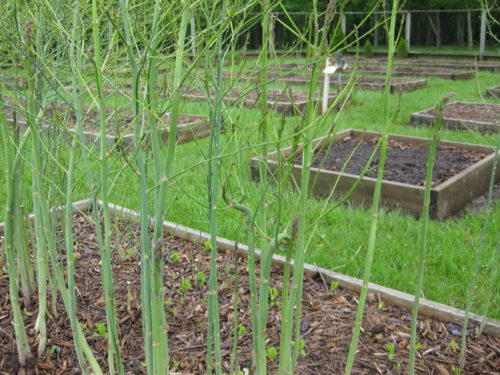


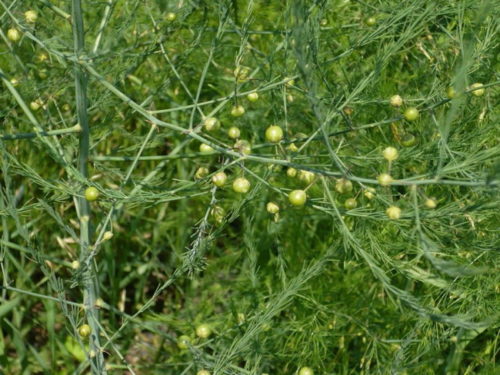
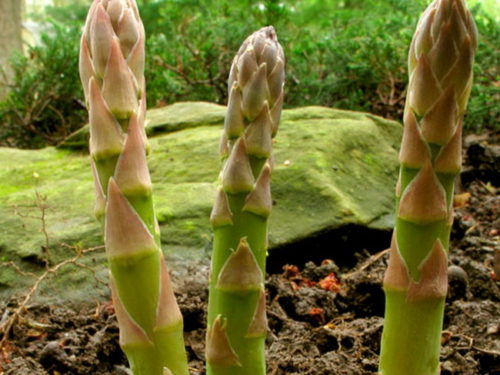




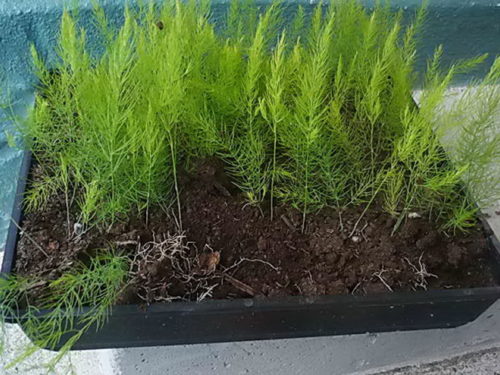
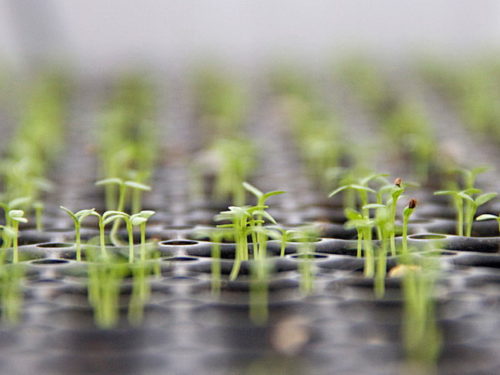

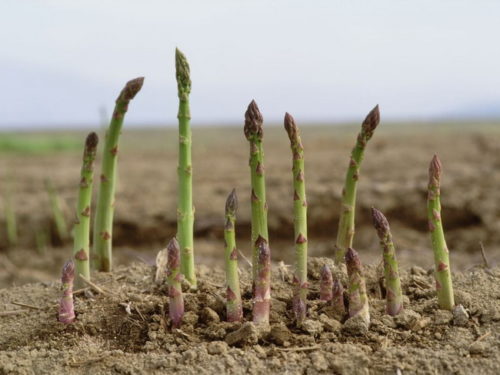



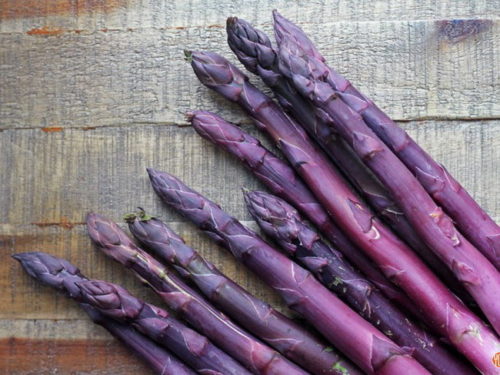
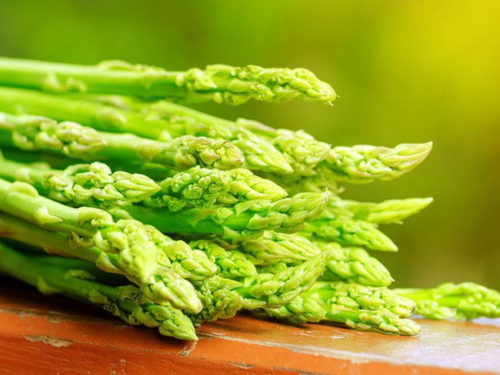







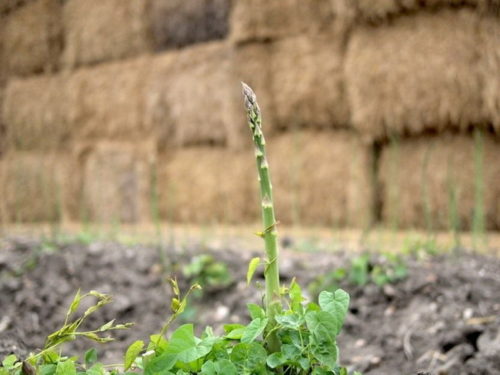












 Start a discussion ...
Start a discussion ...